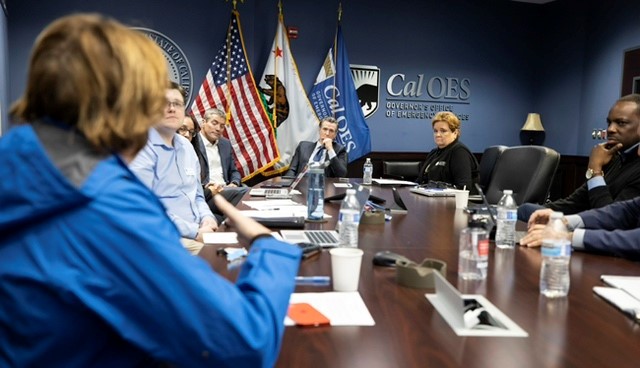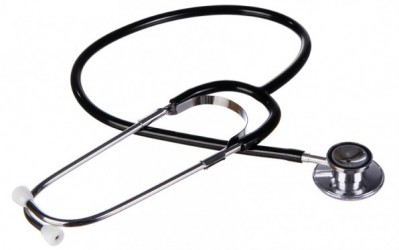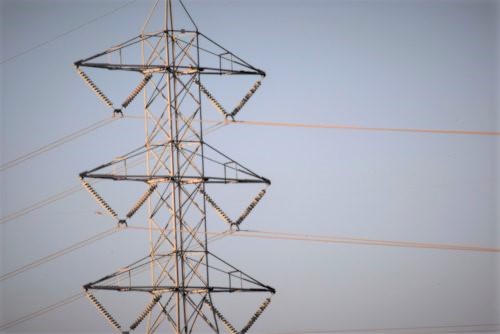Gov. Newsom proclaims State of Emergency ahead of winter storms

By SDCN Editor
Sacramento, CA–Governor Gavin Newsom Wednesday proclaimed a state of emergency throughout California to support the ongoing response to recent winter storms.
The emergency proclamation supports emergency relief efforts including authorizing the mobilization of the California National Guard to support disaster response, directing Caltrans to request immediate assistance through the Federal Highway Administration’s Emergency Relief Program to support highway repairs, and other support for local response and recovery efforts.
Newsom has also activated the State Operations Center to its highest level, and the state and the federal government have stood up the Flood Operations Center, which covers forecasting, reservoir operations coordination, and provides technical support as well as flood fighting materials like sandbags for local agencies.
“California is mobilizing to keep people safe from the impacts of the incoming storm,” said Governor Newsom. “This state of emergency will allow the state to respond quickly as the storm develops and support local officials in their ongoing response.”
The National Weather Service is forecasting heavy rain and snow, strong wind, and the potential for additional flooding threats. The heaviest precipitation is expected Wednesday evening into Thursday morning in Northern California, extending into Thursday night in Southern California. Residual flooding impacts could extend into the weekend along with additional storms lingering into next week.
Prepositioning Resources
The state has prepositioned fire and rescue equipment and personnel to support local resources across the state. Teams will mobilize quickly in the event of mudflows, avalanches, or flash floods.
The California Health and Human Services Agency (CalHHS) has engaged with local and community partners to ensure vulnerable groups —individuals with disabilities, older individuals, and unsheltered individuals—are aware of the incoming storm and have access to services should they need them.
Additionally:
• Department of Social Services is prepared to work alongside local partners and the American Red Cross to establish congregate shelters.
• The Department of Public Health is prepared to deploy regional staff to support hospitals and healthcare facilities.
• The Department of Health Care Access and Information is prepared to deploy structural engineers to healthcare facilities to evaluate impacts on infrastructure.
• Emergency Medical Services Authority is prepared to deploy Ambulance Strike Teams.
Driving and Road Closures
Avoid non-essential travel during the peak of the storm on Wednesday night and Thursday morning. If you must drive, download the QuickMap app or visit QuickMap (ca.gov) to learn up-to-the-minute information on road conditions, traffic, closures, chain control, and more.
Power Outages
Take inventory of the items you need that rely on electricity. Plan for batteries and other alternative power sources to meet your needs if the power goes out such as a portable charger or power bank. Have flashlights for every household member. Determine whether your home phone will work in a power outage and how long battery backup will last.
Emergency Alerts
Californians are reminded to dial 2-1-1 or 3-1-1 to get help or ask questions. If you have a critical emergency, call 911.
Staying informed by signing up for emergency alerts including warnings and evacuation notices. Go to CalAlerts.org to sign up to receive alerts from your county officials.
Flood Risk
If you are under a Flood Warning:
• Find safe shelter right away.
• Do not walk, swim or drive through flood waters. Turn Around, Don’t Drown!
• Remember, just six inches of moving water can knock you down, and one foot of moving water can sweep your vehicle away.
• Stay off bridges over fast-moving water.
Know Your Medical Needs
Talk to your medical provider about a power outage plan for medical devices powered by electricity and refrigerated medicines. Know how long your medications can be stored at higher temperatures and get specific guidance for any medications that are critical for life.
Generator Safety
Portable backup generators produce the poison gas carbon monoxide (CO). CO is an odorless, colorless gas that kills without warning. It claims the lives of hundreds of people every year and makes thousands more ill. Follow these steps to keep your family safe.







